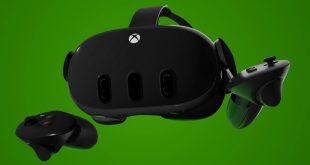One virtual reality developer claims to have solved some of the major problems with getting around in virtual reality beyond room scale. Called the CAOTS system, it utilises head bob tracking and arm motion to calculate your pace and lets you move around large, virtual environments while bobbing, walking and running on the spot.
The issue of how locomotion in virtual reality should work is one that has been debated since the launch of VR development kits of the original Oculus Rift. Popular choices include teleportation, artificial trackpad movement and roomscale, real-world movement. All of these have their advantages and their drawbacks, so people have been searching for something that can improve upon them without the issues they so often come with. [yframe url='http://www.youtube.com/watch?v=YR4vIDFsnak']
One solution that George Kong, director at Huge Robot has come up with, is the Freedom Locomotion system, or more specifically, CAOTS. While his demo – available for free to all HTC Vive users – has altered versions of traditional teleportation like Blink Step and Dash Step, it's the CAOTS system that has many intrigued.
CAOTS uses tracking data from the bob of your headset and the movement of your controllers, to simulate walking, running and sprinting in the virtual world. The idea is that as you walk on the spot, you will walk in the game too, with your directional press on the controller's touchpad determining the direction you travel in. That means you can continue to move while using your hands for other things – like firing guns – and also look around you as you move, as you might in the real world. [yframe url='http://www.youtube.com/watch?v=LiQJS8ir9sQ']
We can confirm from our own testing that the system works pretty well. Faster movements are more easily tracked than slower ones and a bobbing, boxer's shuffle is better tracked than walking in place, but it's rather effective. We suffered very little motion sickness and the immersion from being able to go from running, to climbing, to slowly walking around corners, was very effective.
Discuss on our Facebook page, HERE.
KitGuru Says: It still needs some work to smooth out some of the movements and side to side movement can still be a little nauseating at high-speed, but this is the most effective locomotion system I have tried to date. Give the demo a try if you have a Vive, you'll be impressed.
 KitGuru KitGuru.net – Tech News | Hardware News | Hardware Reviews | IOS | Mobile | Gaming | Graphics Cards
KitGuru KitGuru.net – Tech News | Hardware News | Hardware Reviews | IOS | Mobile | Gaming | Graphics Cards



Look over following article to understand how a single mom was able to generate $89,844/year in her extra time on her personal pc without selling anything>>>INTERNET84.WEEBLY.COM